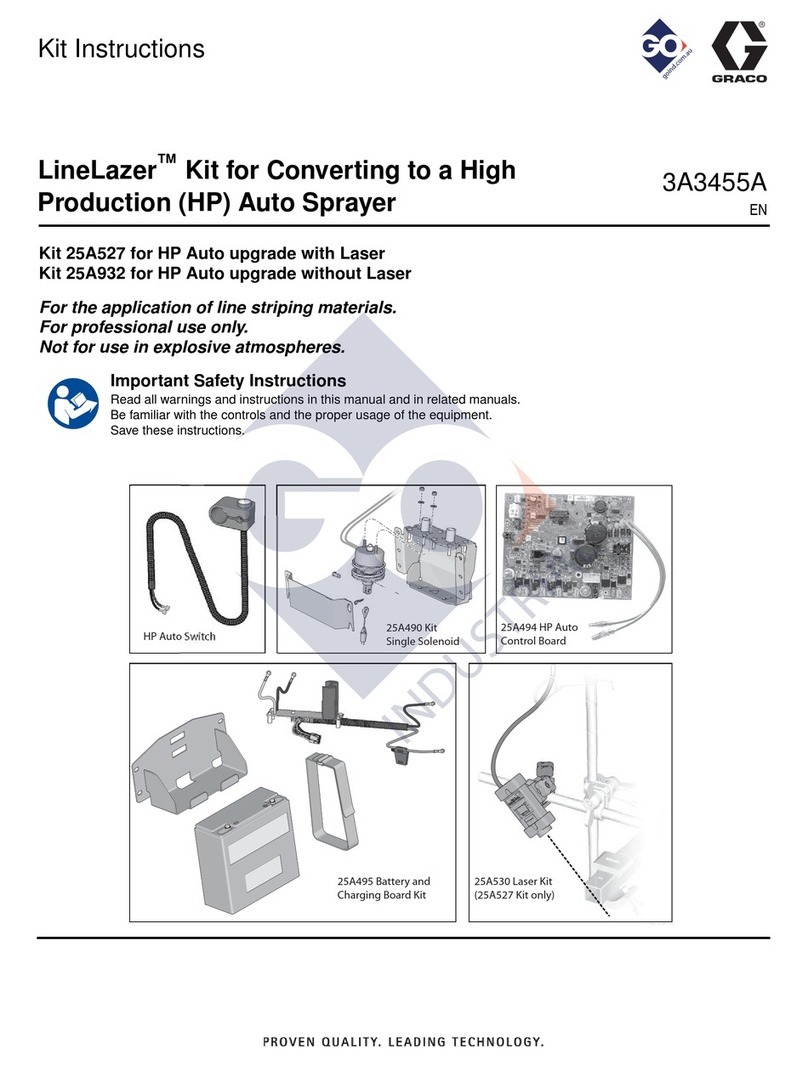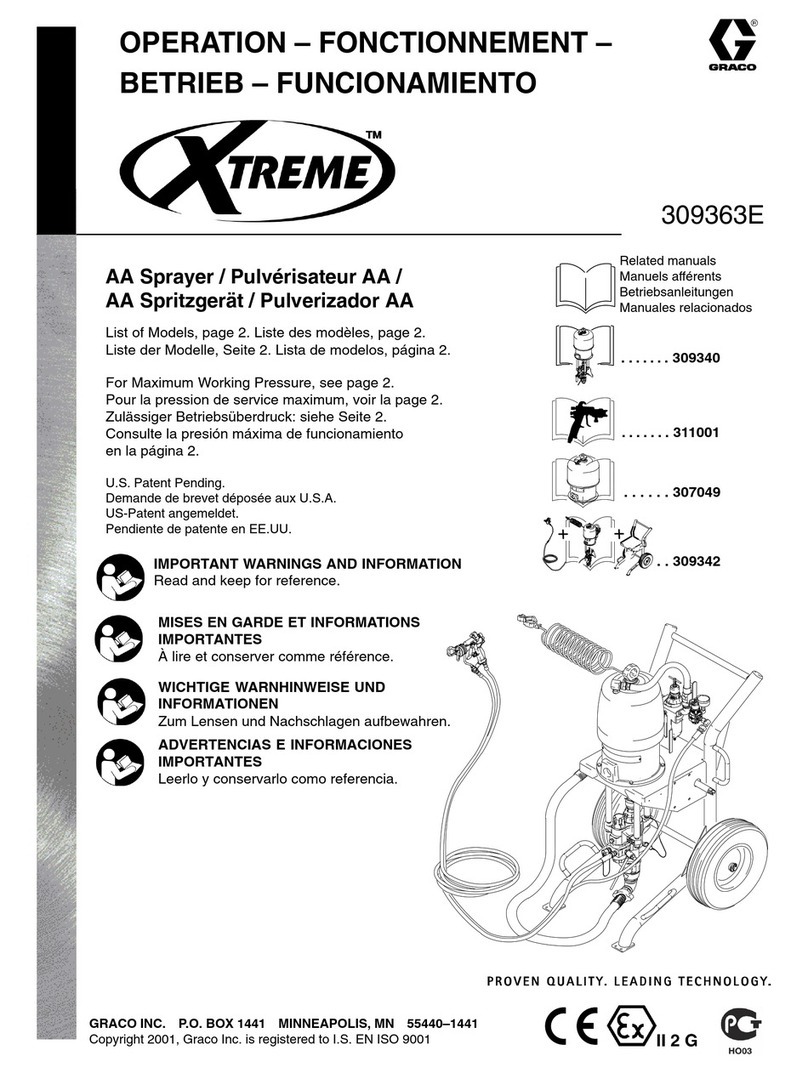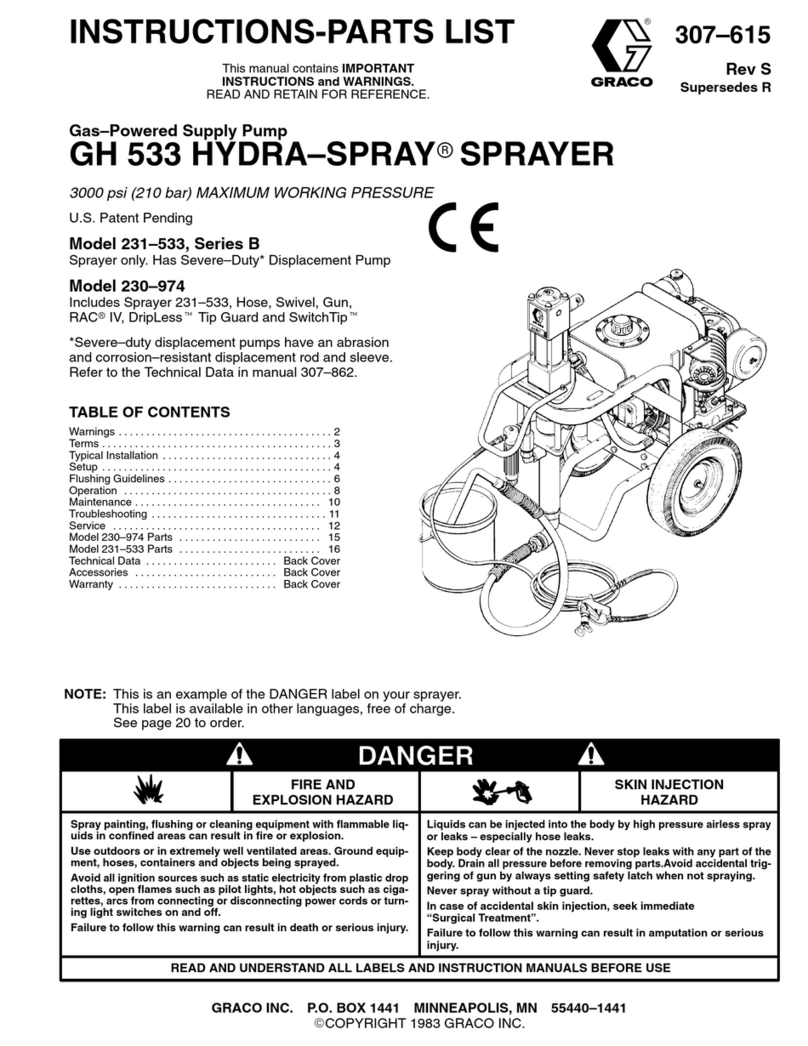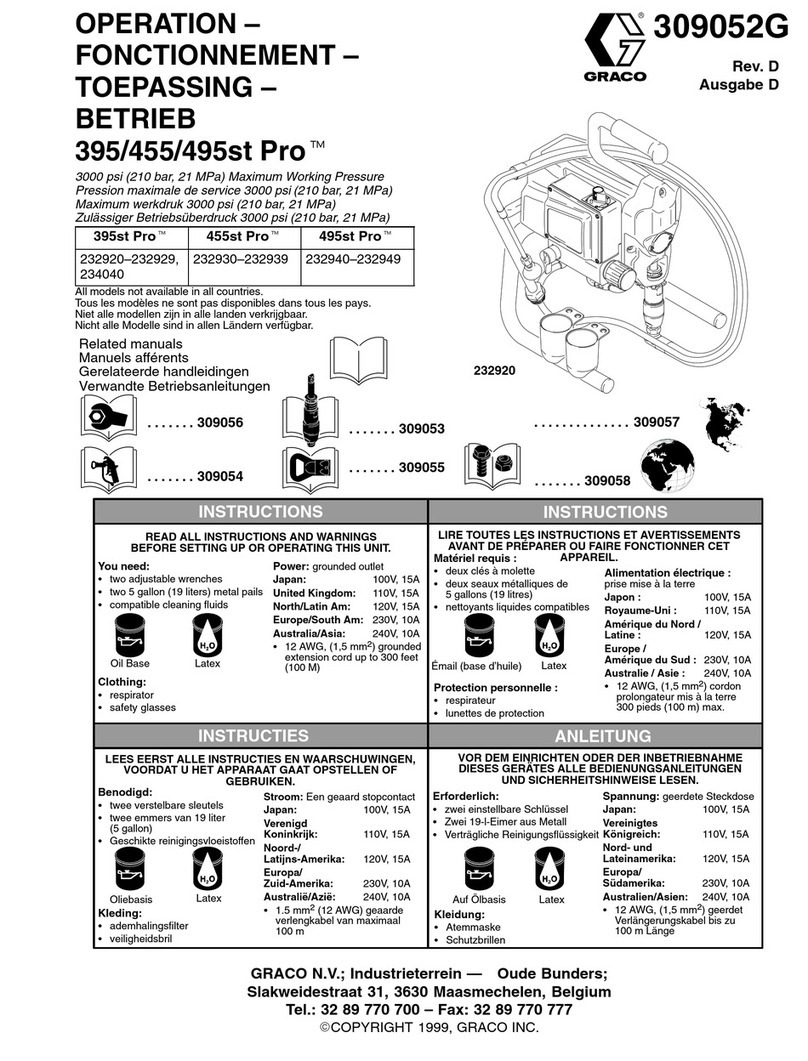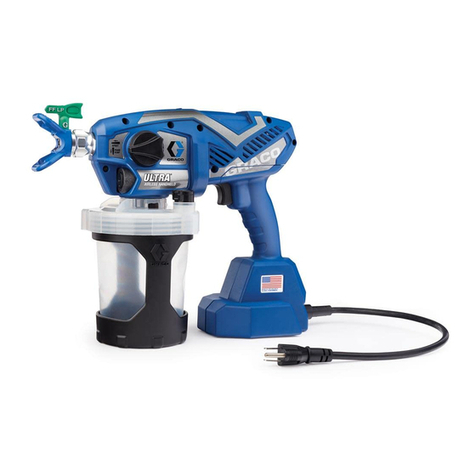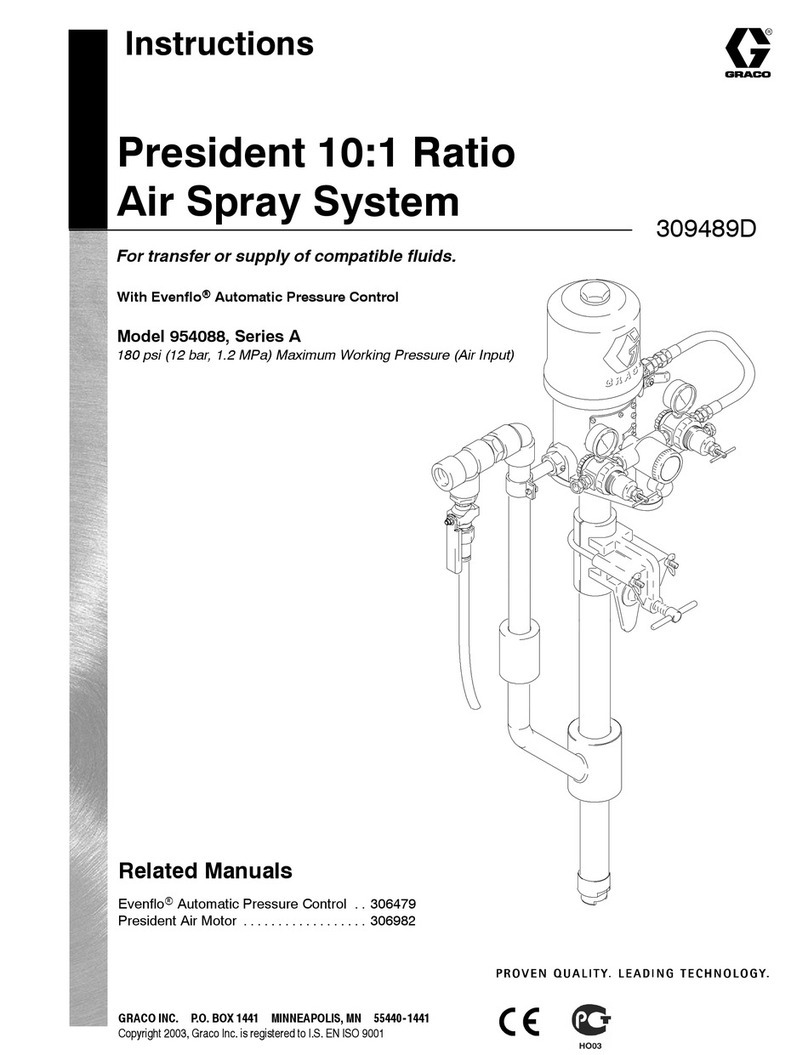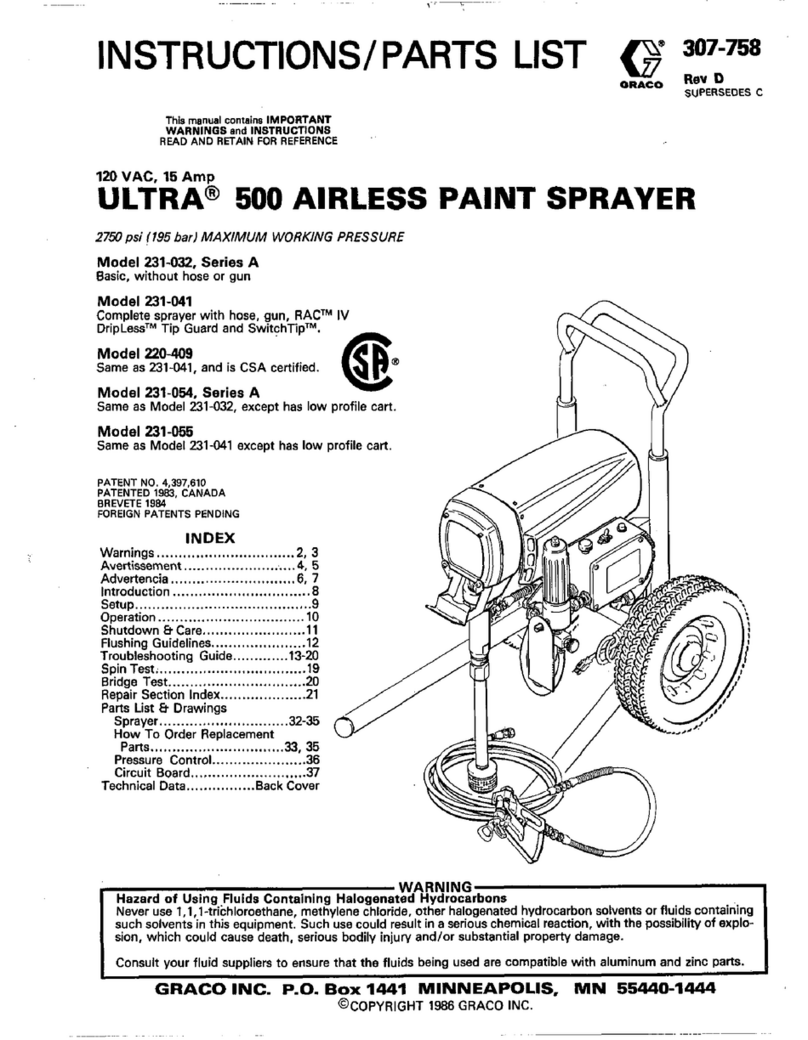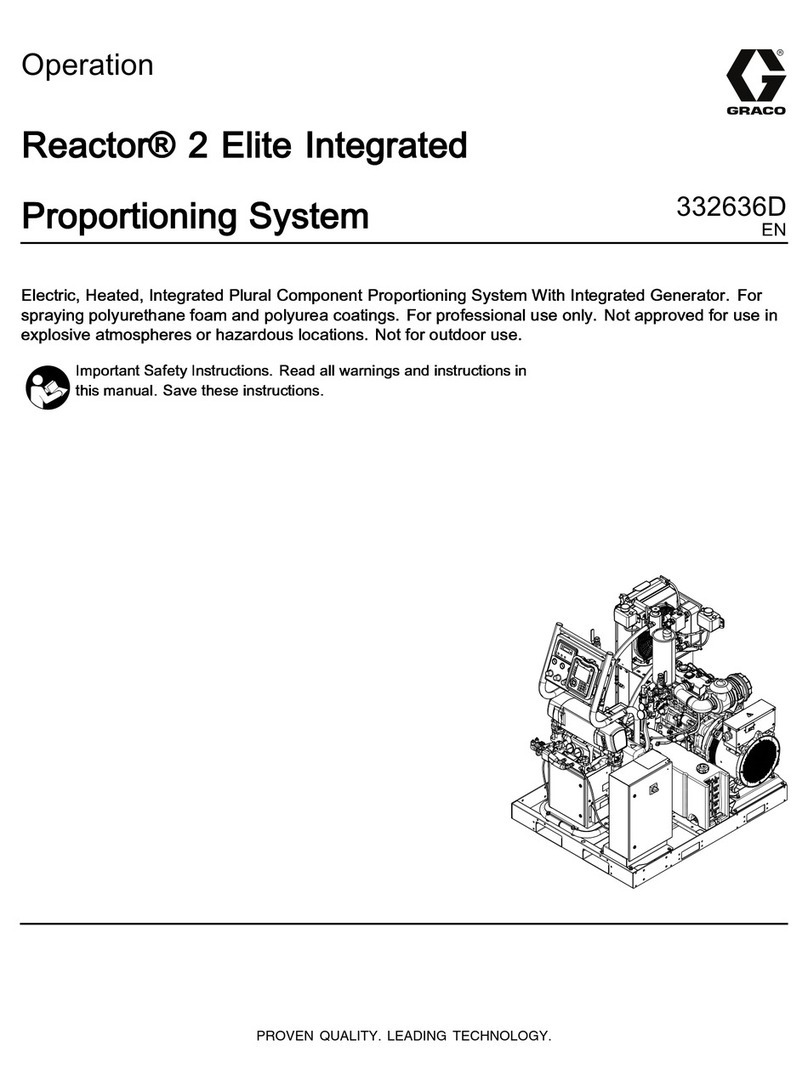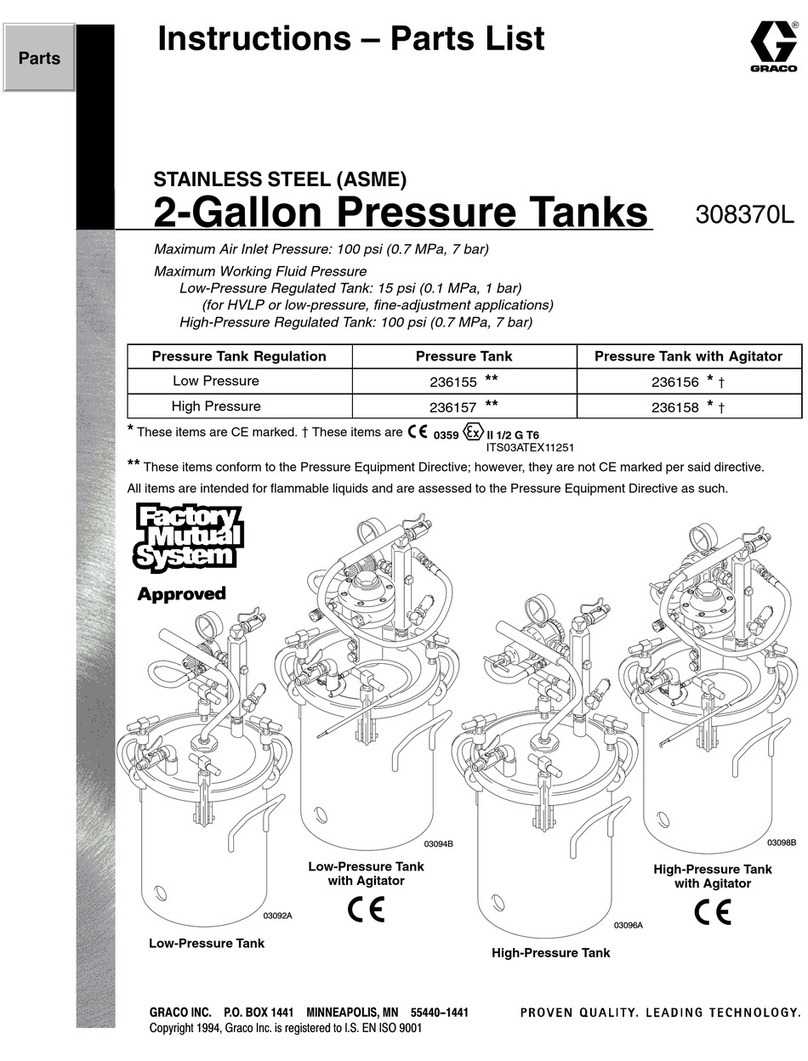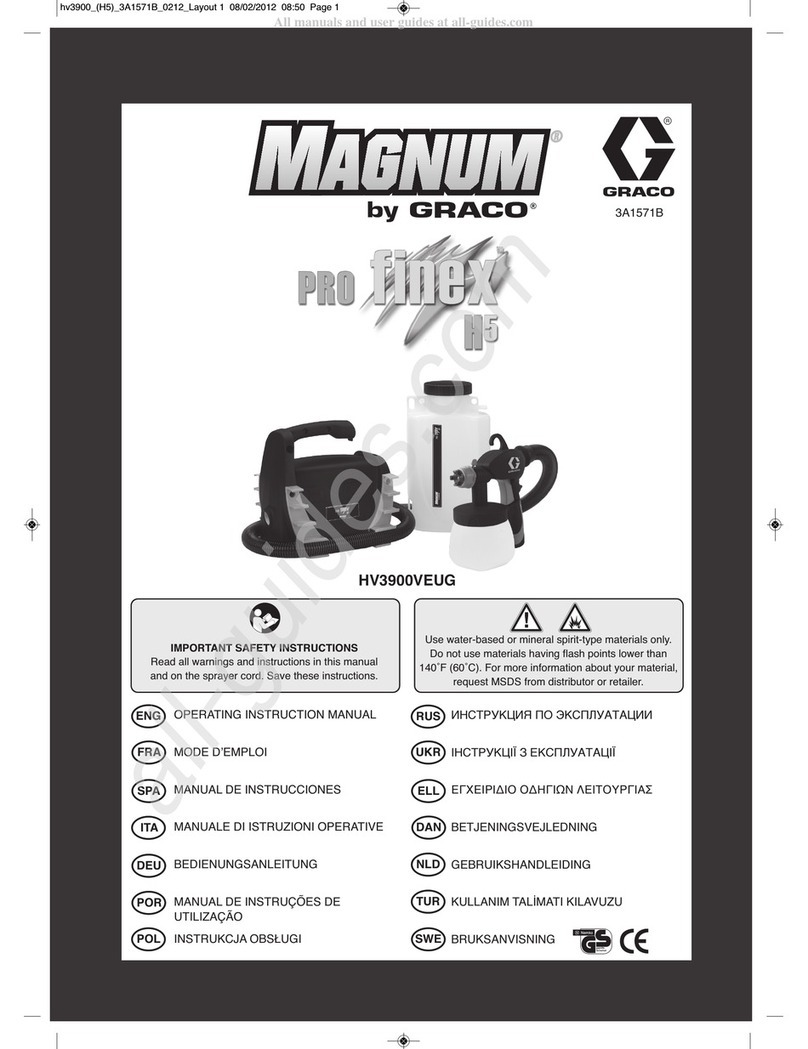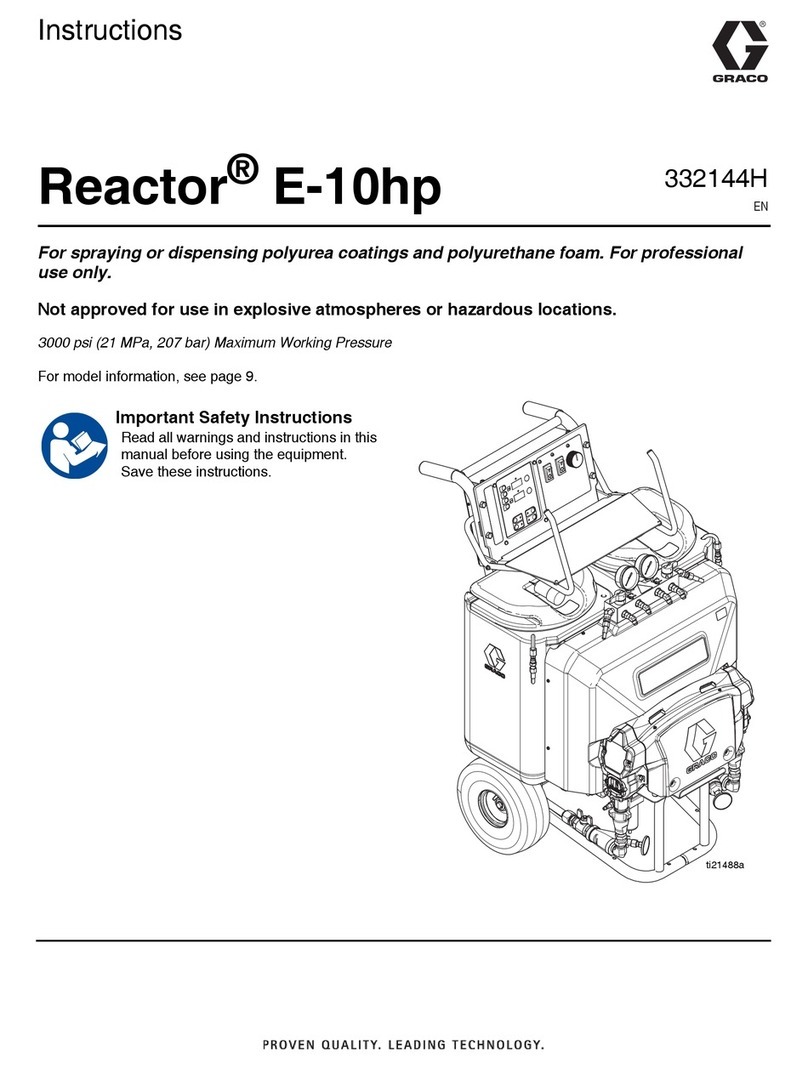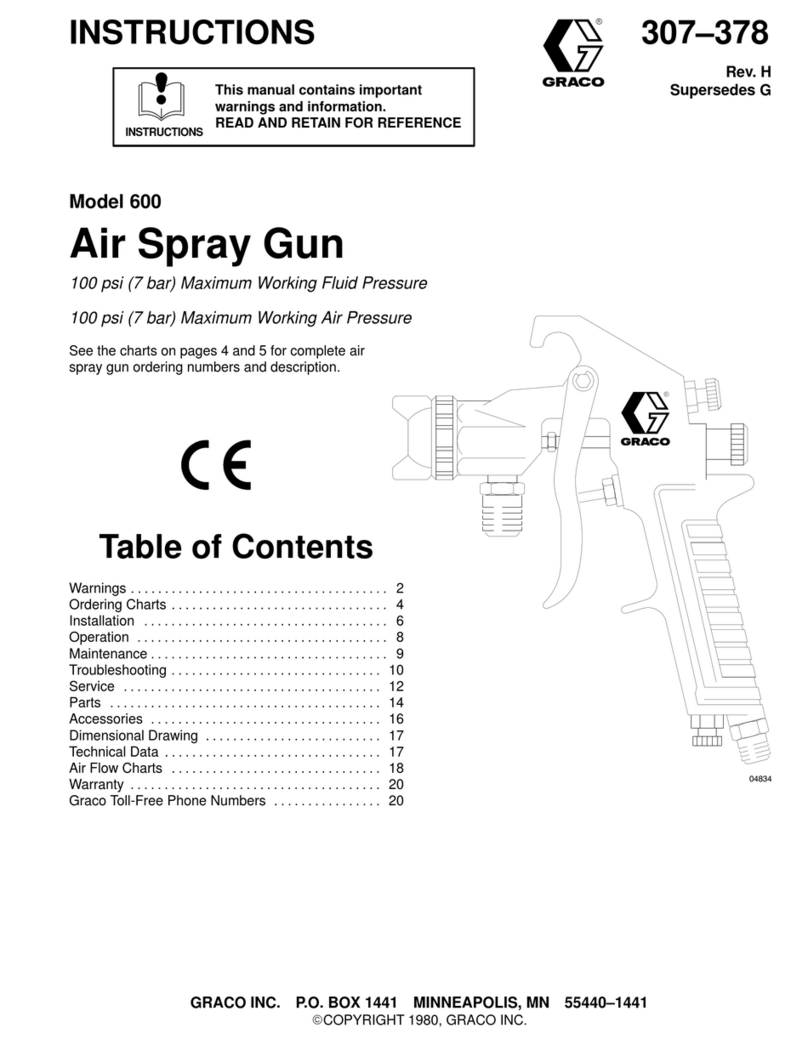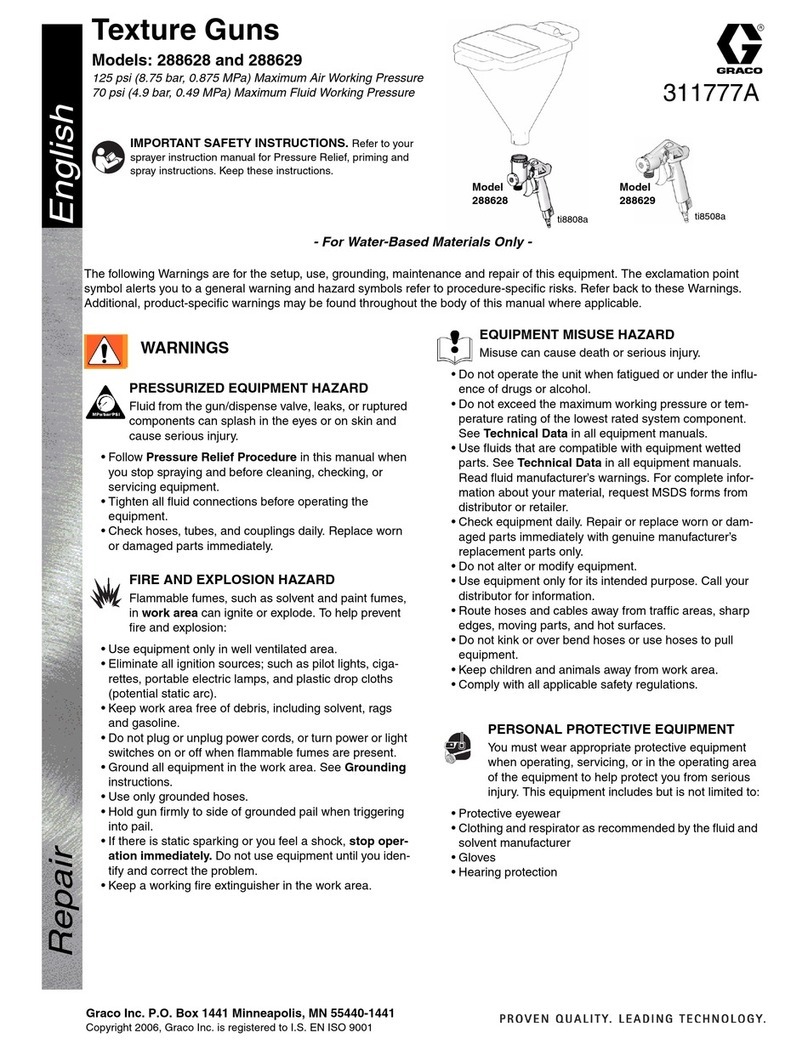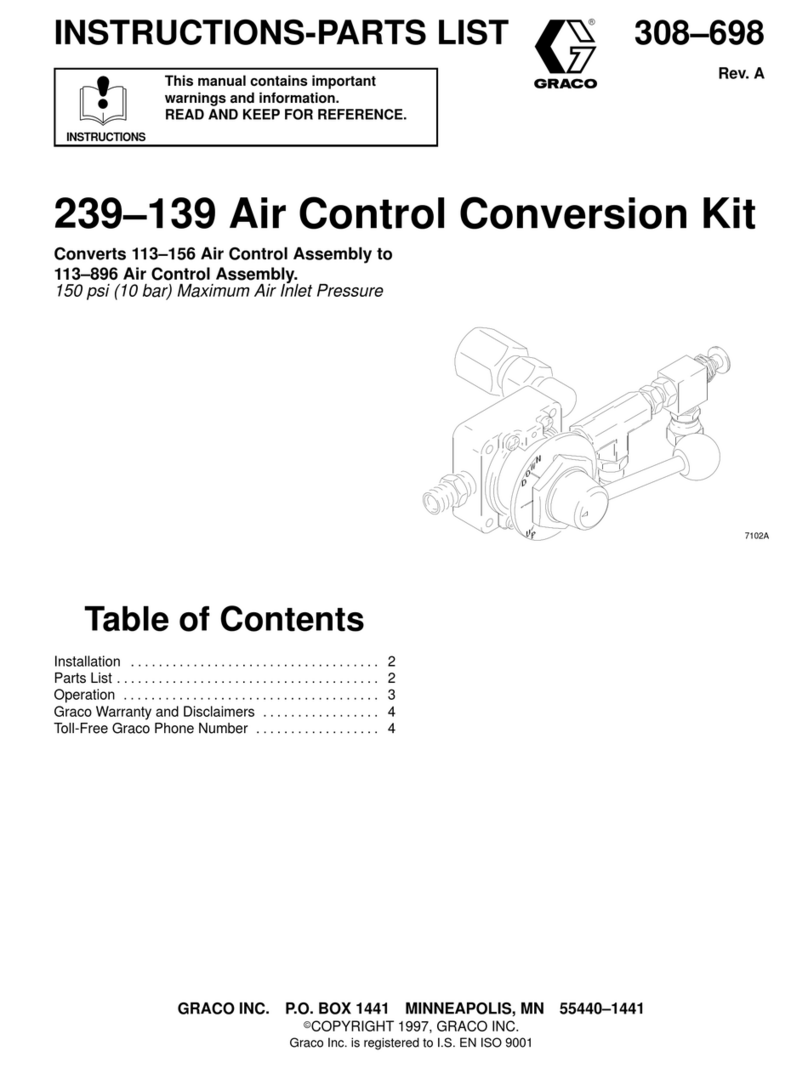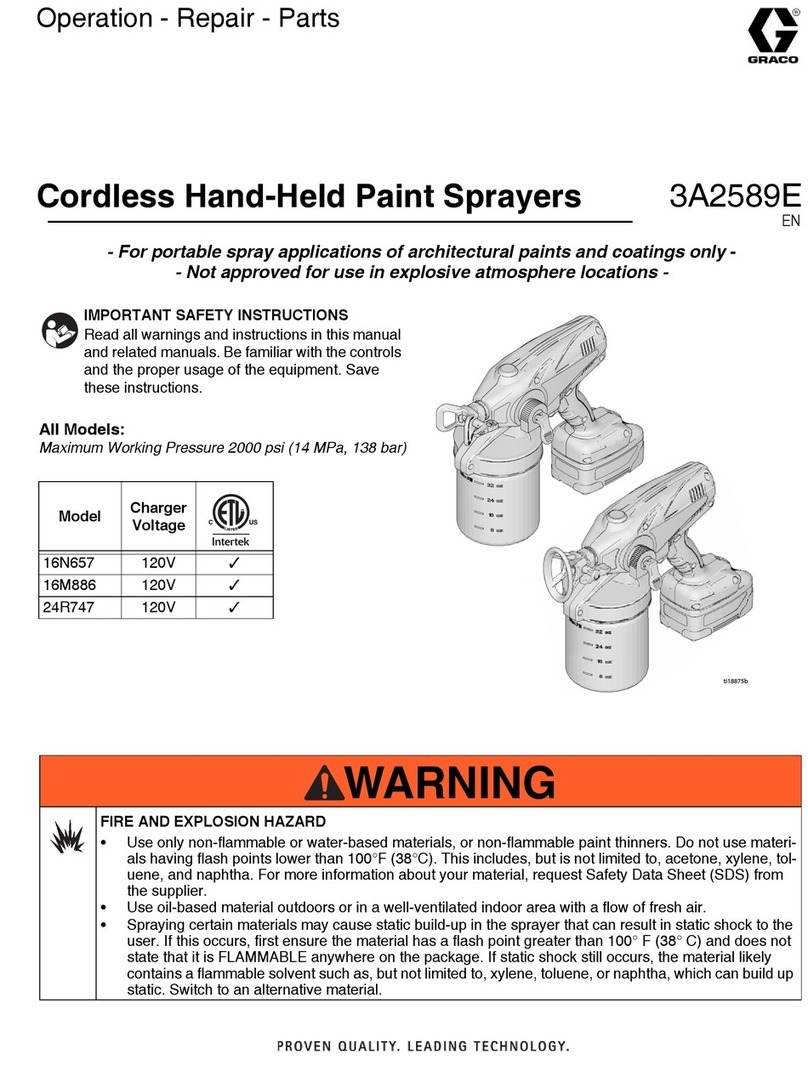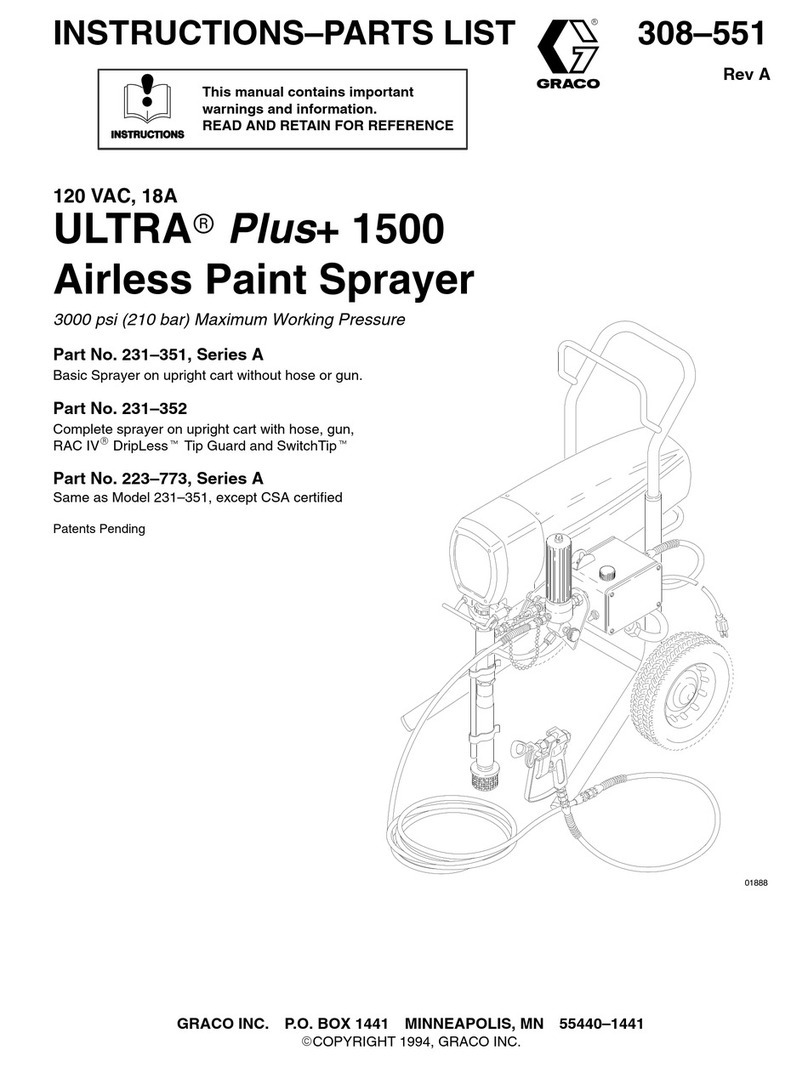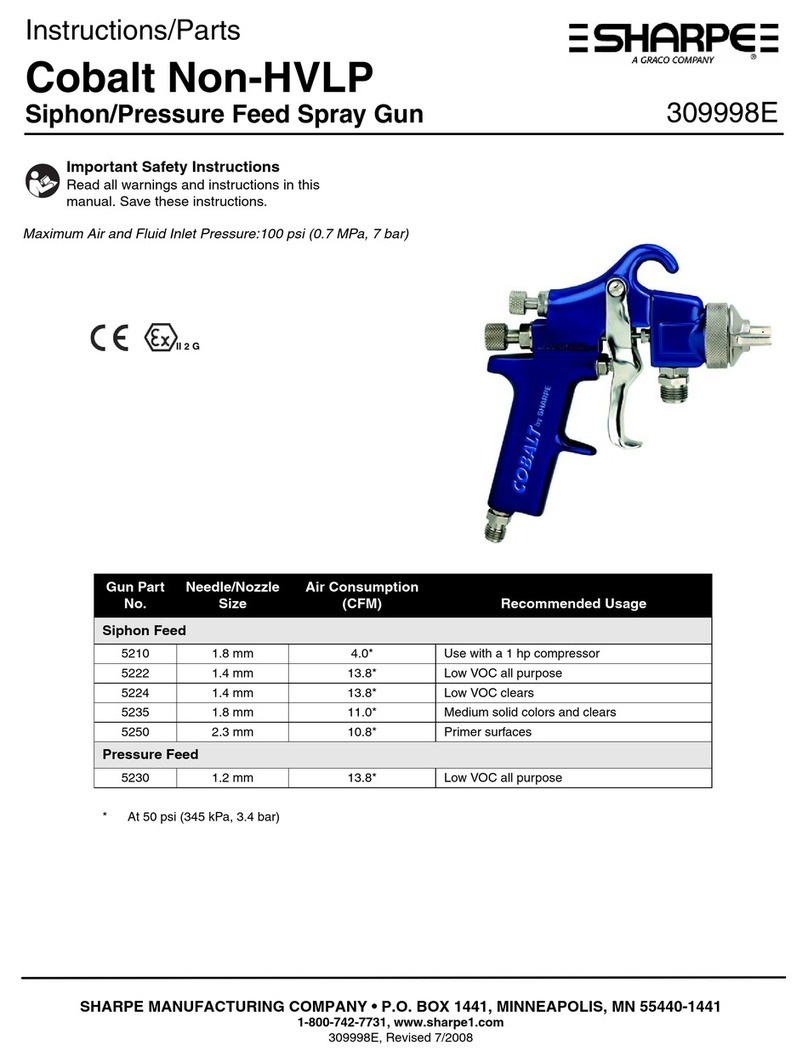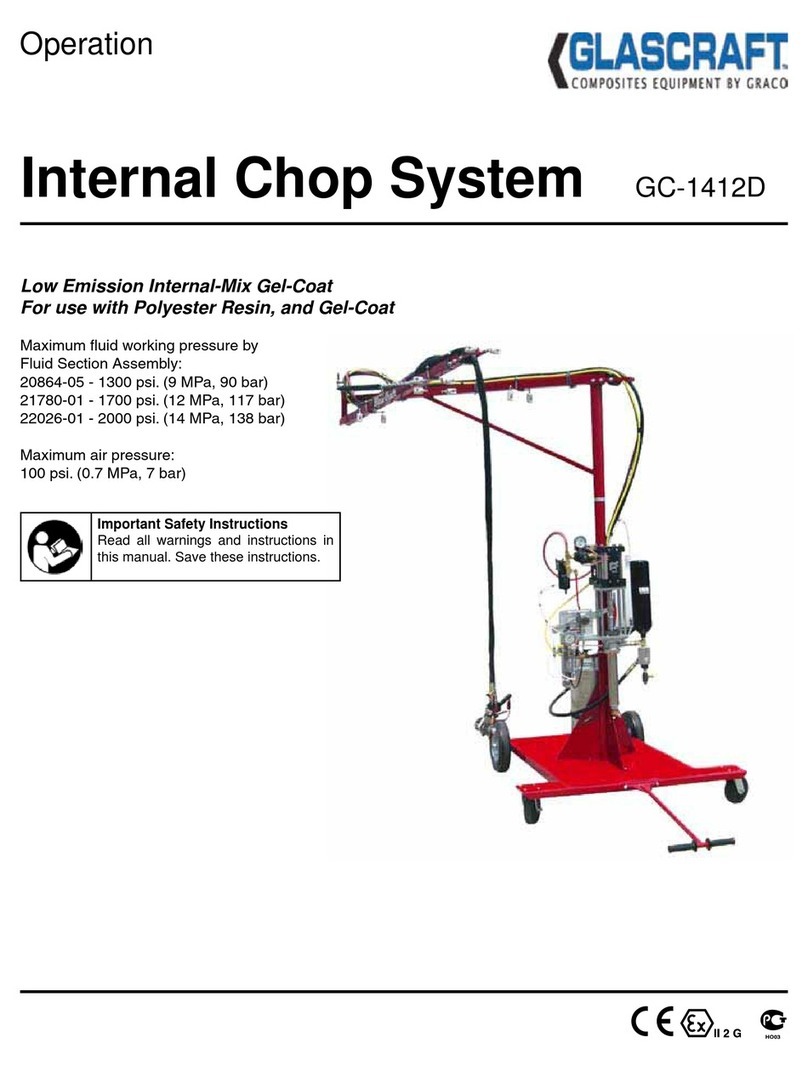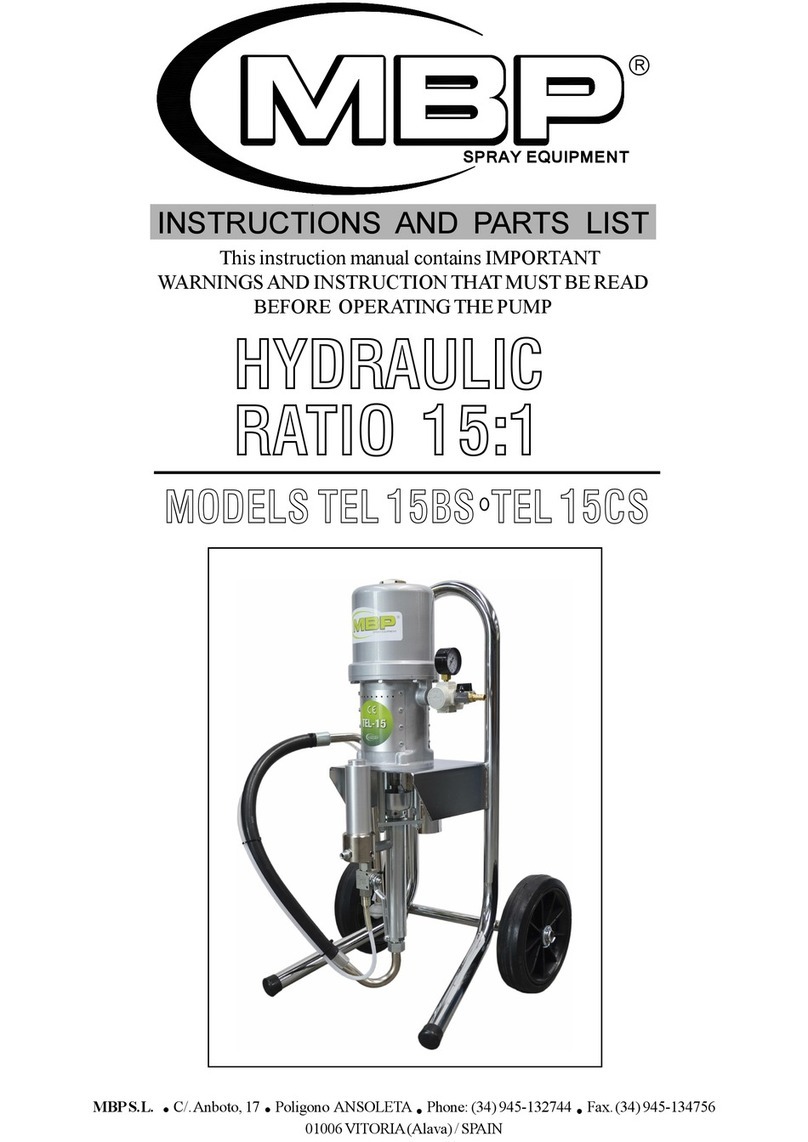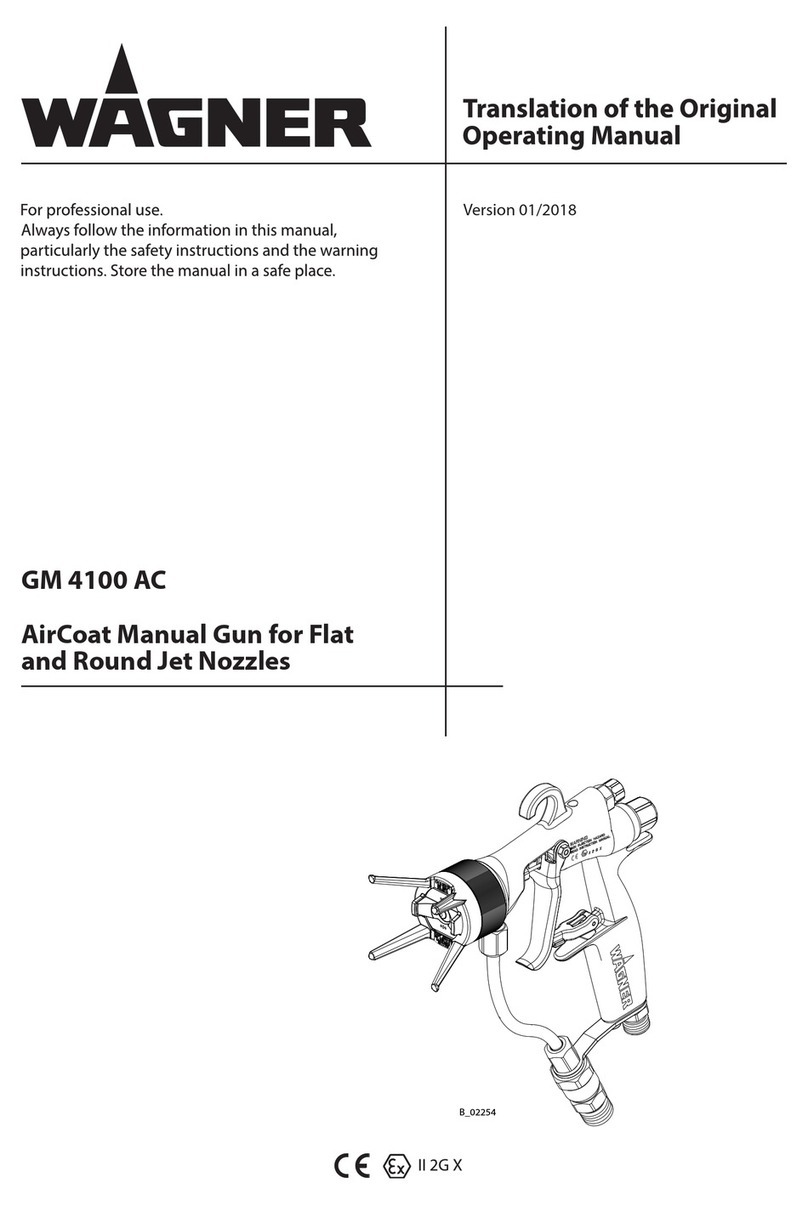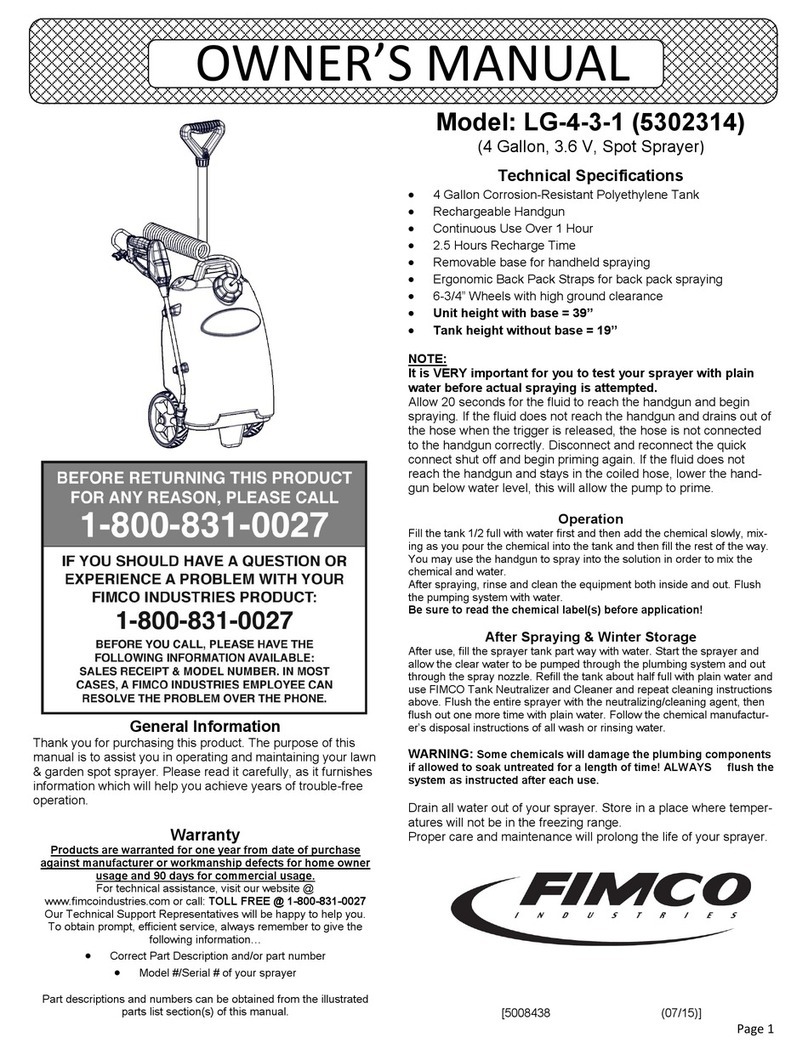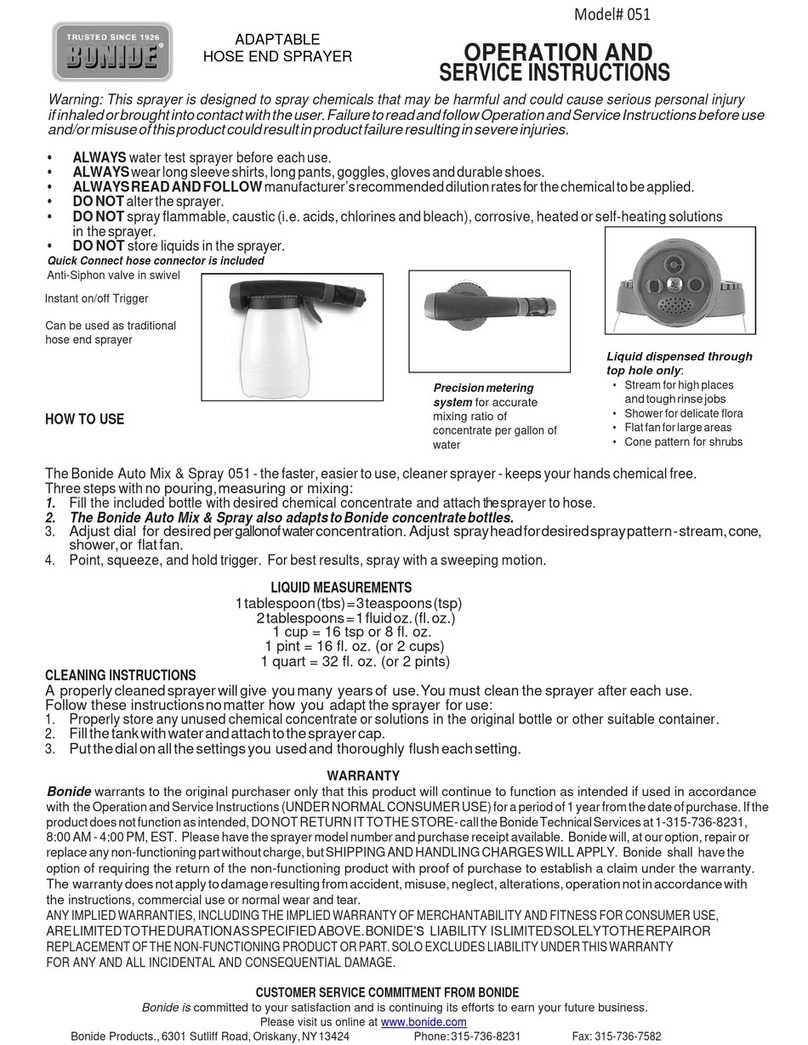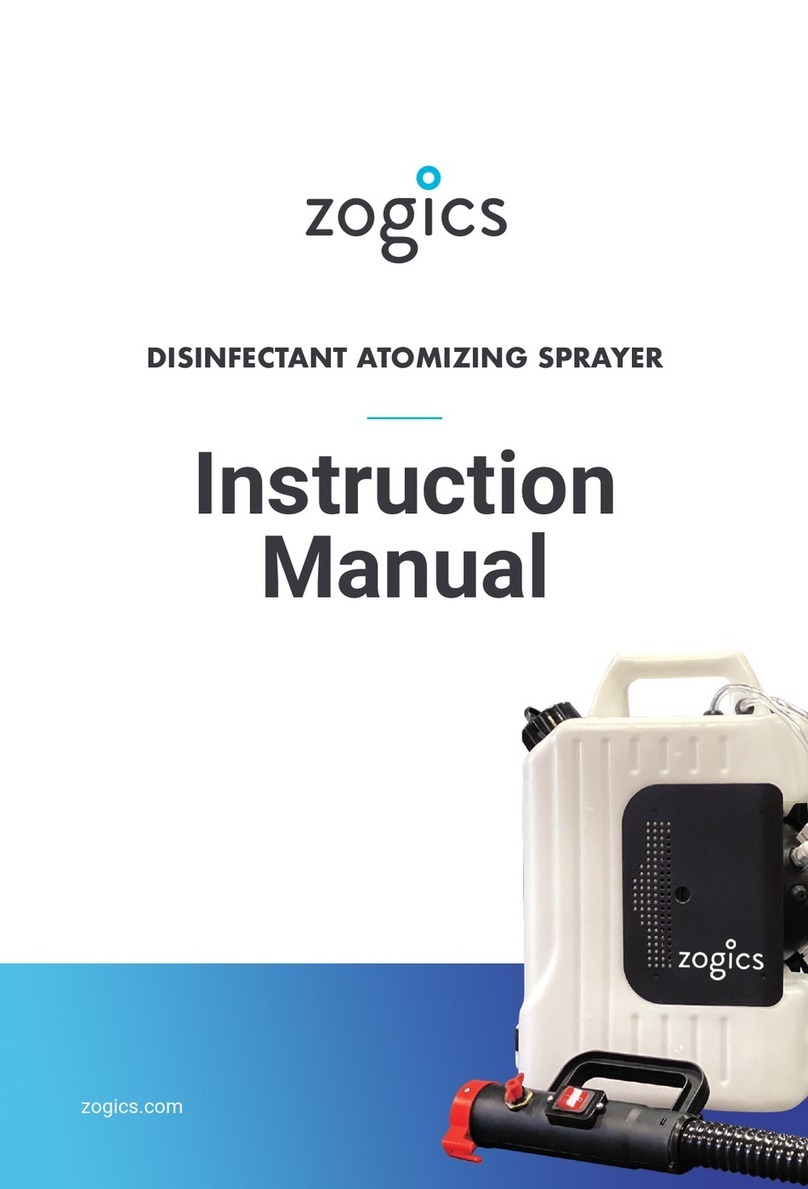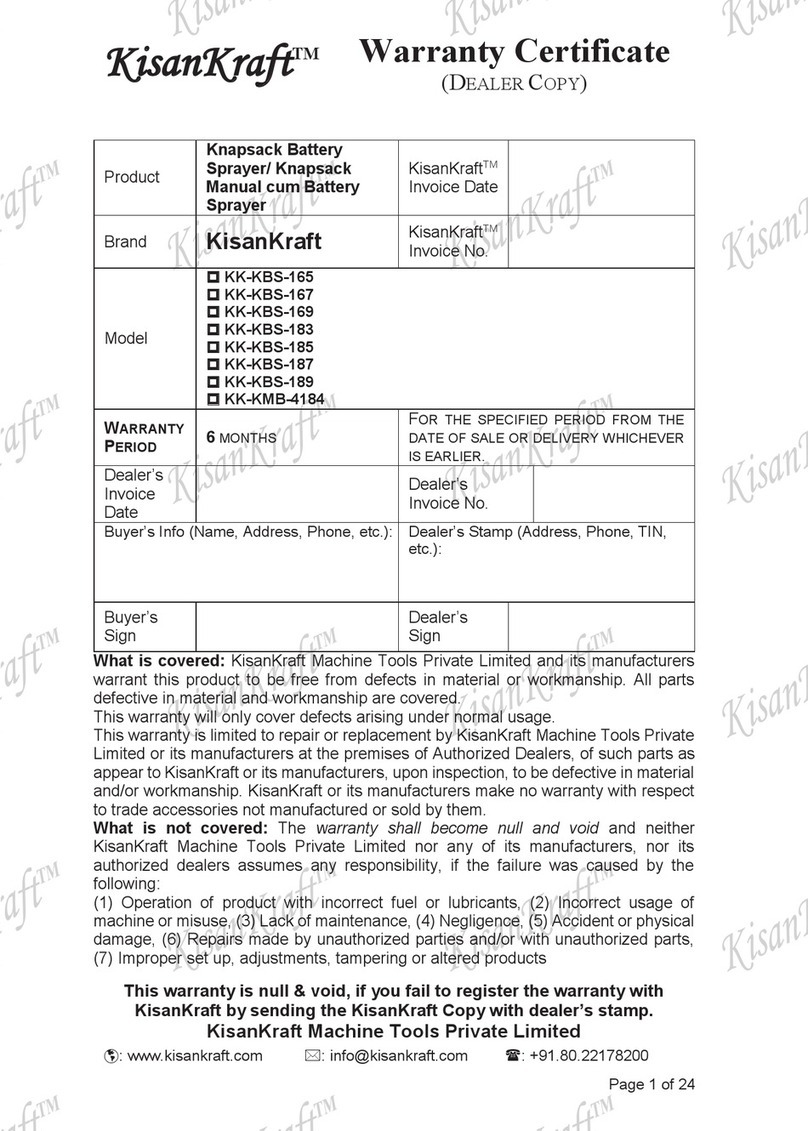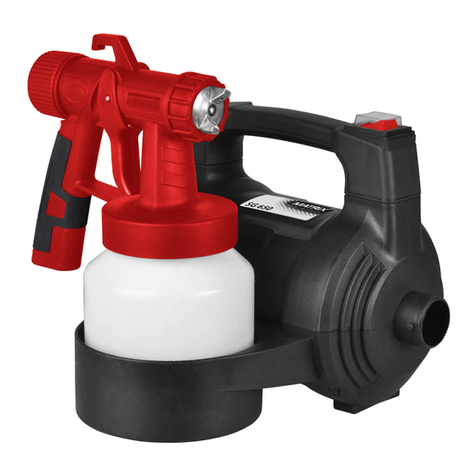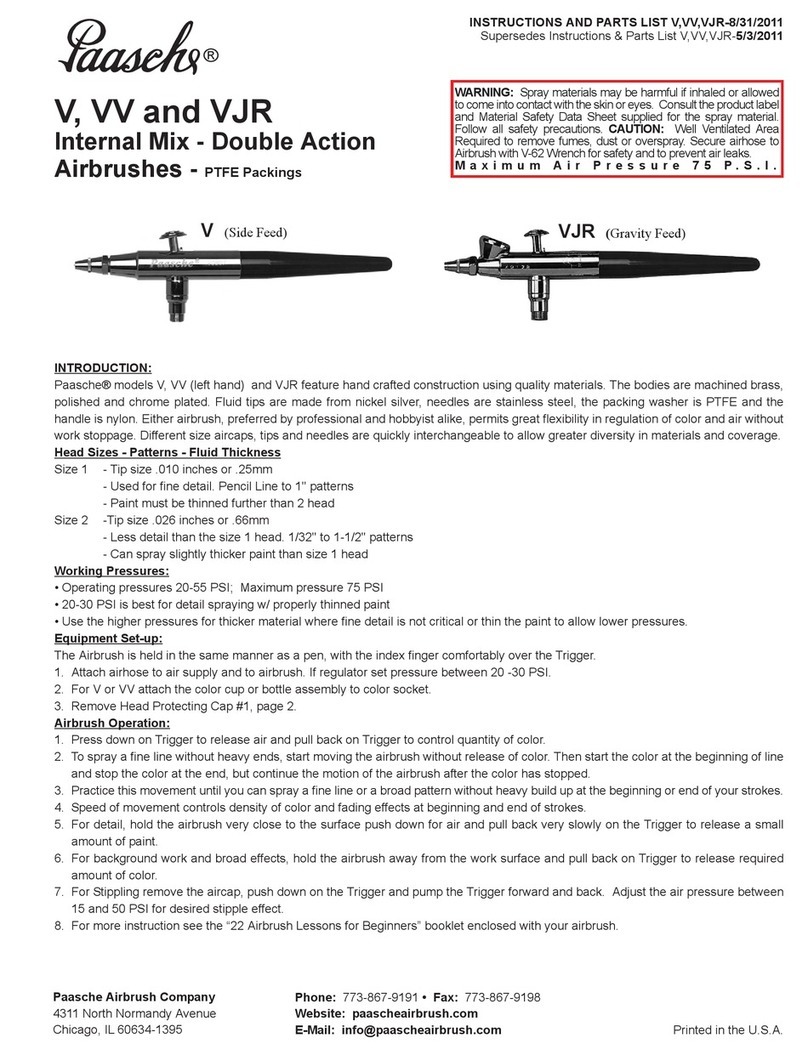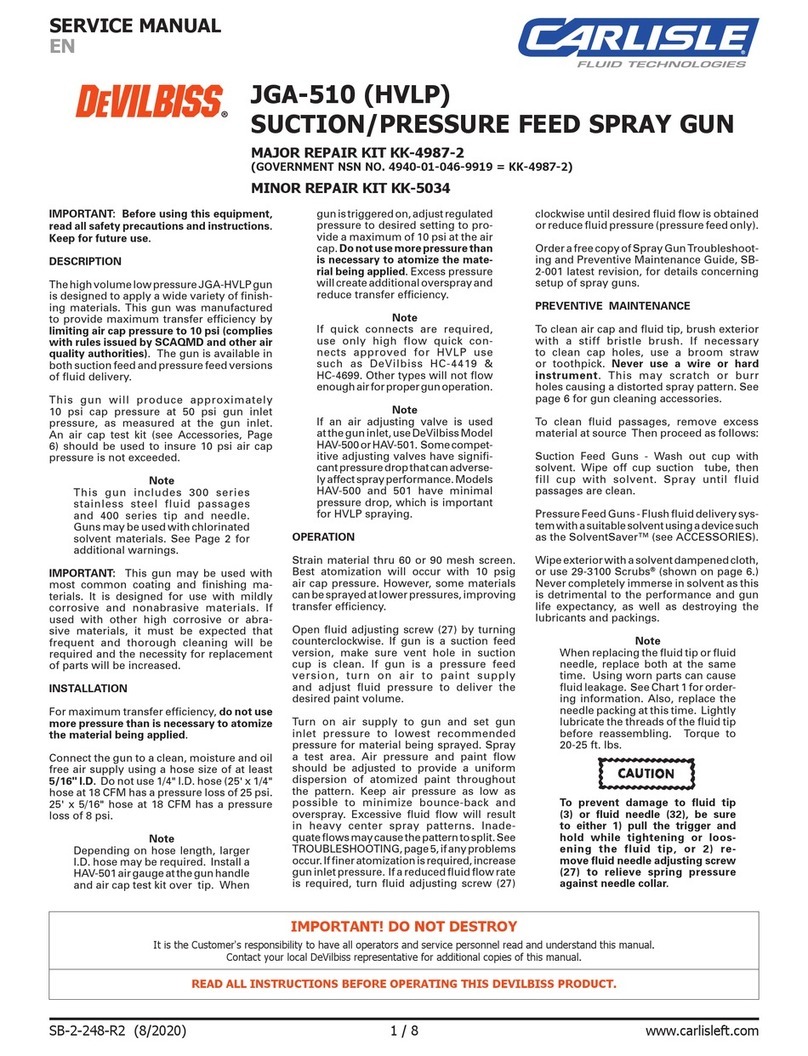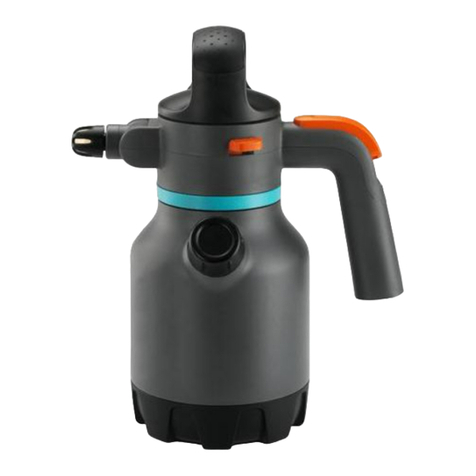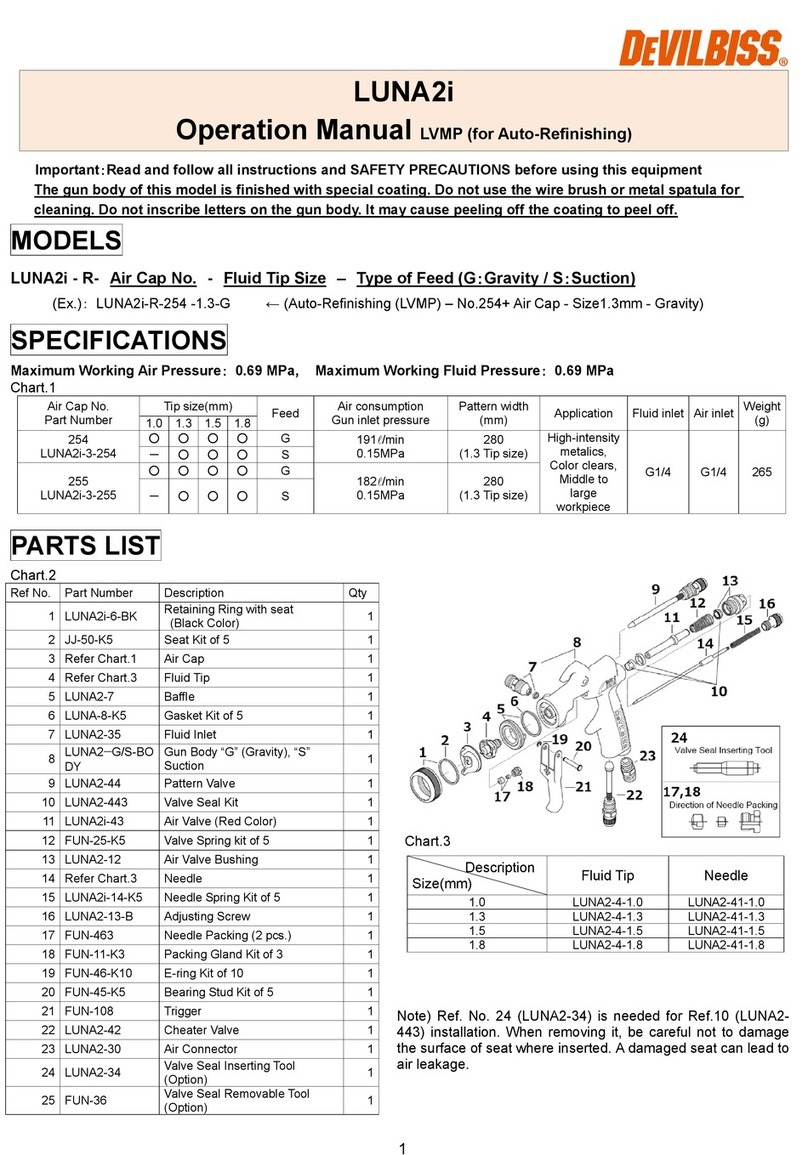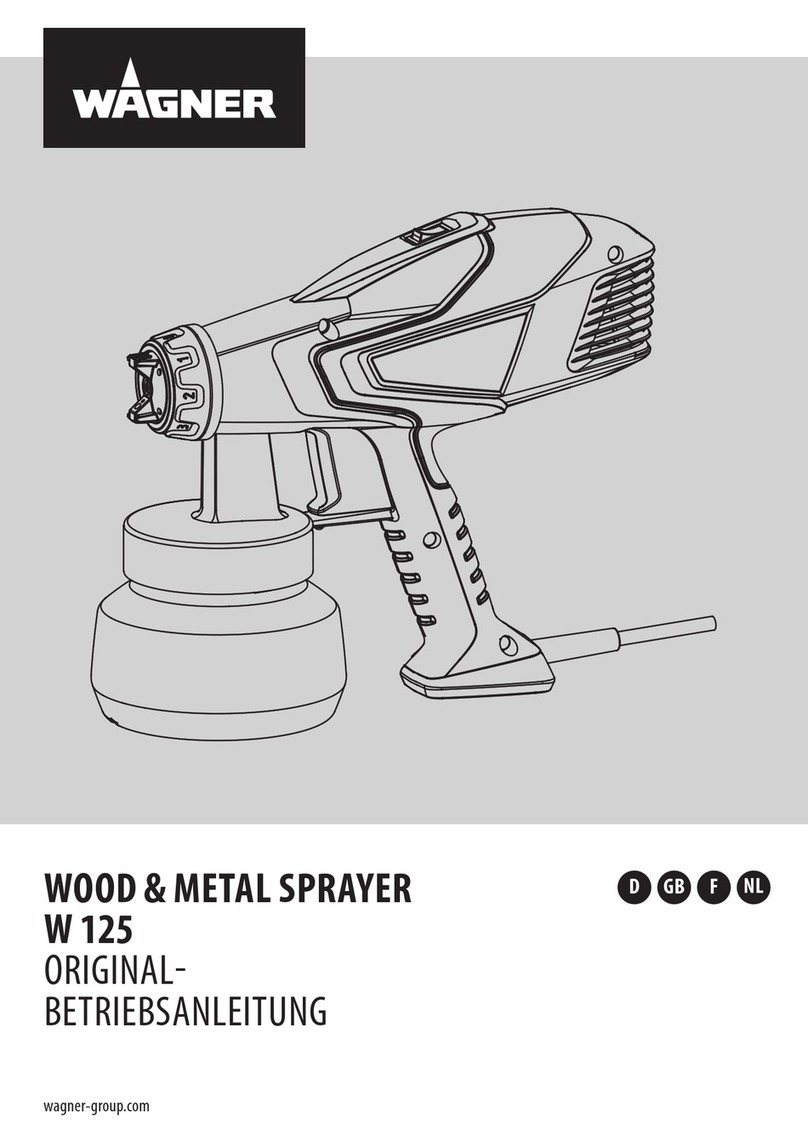
7
307-922
STARTUP
Pressure
Relief Procedure
To
reduce the risk of serious bodily injury
, including
injury from moving parts, or electric shock, always
follow
this procedure whenever you shut of
f the
sys
-
tem,
when checking or servicing any part of the sys
-
tem
and whenever you stop dispensing
.
1. T
urn the ON/OFF switch to OFF
.
2.
Unplug the power supply cord.
3. T
rigger the spray valve to relieve pressure.
If
you suspect that pressure is not fully relieved after
following
the steps above,
open the priming valve
2
turns
counterclockwise.
WARNING
1.
Place the suction hose in the pail of material
.
2.
Plug in the sprayer
.
3.
Open the priming valve 2 turns
counterclockwise.
4. T
urn the ON/OFF switch ON.
5. Y
ou can see the material being drawn
into the suc
-
tion hose (if the hose is clean). As soon as you see
material flow through the priming tube, close the
priming valve. This usually takes less than 30 sec-
onds.
CAUTION
Failure to completely close the priming valve after
the system is primed will cause the valve to erode,
greatly shortening the valve life.
NOTE: If your system is hard to prime, first try to force
feed
the suction tube. Hold the suction tube in a
vertical
position and pour
material
into it. T
urn on
the system. If the system does not prime within
one minute, shut it off. Heavy viscosity material
may need to be thinned. Be sure to follow the
material manufacturer ’s recommendations on
thinning.
6. Trigger
the spray
valve to prime the outlet hose and
extension. Once primed, the motor will run when
there is material demand, but appears to shut itself
off
when there is no material demand.
NOTE: An occasional start and stop of the motor when
the spray
valve is not triggered is normal.
OPERATION
WARNING
To reduce the risk of electric shock, do not expose
the
system to rain. Always store the system indoors.
Do not operate the pump with the base cover
removed.
CAUTION
Always
allow cold equipment to warm to room tem
-
perature before using it to prevent damaging the
system.
1. With
the system fully primed, trigger the spray
valve
briefly until an even flow of material is spraying out
of
the tip.
2. Hold the spray tip approximately 12 in. (300 mm)
from
the surface and start spraying.
3. For low pressure spraying, use the 431 size tip
supplied
with the
wand. This tip develops a spray pat
-
tern at a very low pressure when spraying fluids
about
the viscosity of water
, such as wetting agents,
penetrating
encapsulants and lockdowns.
4. For fine-finish spraying, use the fine-finish tip
which produces a fine mist for “glove bag” applica-
tions.
5. When you ARE DONE spraying, turn the ON/OFF
switch
to OFF and trigger the spray valve.
6. Thoroughly
flush the system immediately after each
use
to keep it in good working order
. See page 8.
